Introduction:
FC Barcelona, one of the most prestigious football clubs in the world, has always been at the forefront of innovation, whether in terms of playing style, tactical evolution, or training methodology. In recent years, the club has made several key changes to its training structure, introducing new philosophies and techniques aimed at improving overall performance and adapting to the evolving demands of modern football. With the return of experienced management and a clear commitment to youth development, Barcelona is once again positioning itself to challenge for both domestic and international titles.
The changes in the club’s training courses are not just focused on enhancing individual player performance, but also on improving team cohesion, tactical flexibility, and overall fitness. As the team navigates through the competitive landscapes of La Liga and the UEFA Champions League, these adjustments in training are crucial in giving Barcelona the edge it needs to return to its glory days.
In this article, we will explore the recent changes in FC Barcelona’s training regimen, focusing on how they aim to improve the team’s performance both individually and collectively.
Section 1: The Shift Toward Tactical Flexibility and Positional Play
- Tactical Flexibility Training: Under the leadership of Xavi Hernández, Barcelona has seen a renewed emphasis on tactical flexibility. Xavi, a former Barcelona legend, understands the importance of adapting to different game situations while maintaining the core principles of the club’s playing style. The recent changes in Barcelona’s training courses include a greater focus on tactical adaptability, where players are encouraged to learn how to play in multiple positions and respond to different tactical demands.
- Positional Play (Juego de Posición): Positional play remains a fundamental aspect of Barcelona’s approach to training, with an increased emphasis on maintaining control of possession, creating numerical superiority in key areas, and quick transitions. The team’s sessions often involve drills that focus on ball circulation, maintaining structure in attack, and ensuring defensive solidity without sacrificing the attacking mindset.
- Improved Tactical Awareness: Players are now trained to analyze and respond to various pressing systems and defensive structures they may encounter in matches. This allows Barcelona to break down opposition defenses more effectively while maintaining control of the ball in the midfield. Training sessions have been adjusted to incorporate more complex game scenarios, with players being put in high-pressure situations to improve decision-making speed and reaction time.
Section 2: Incorporation of Advanced Fitness and Recovery Techniques
- High-Intensity Interval Training (HIIT): As the demands of modern football continue to increase, with an emphasis on pressing, counter-pressing, and rapid transitions, Barcelona has adopted a more intense fitness regimen. One of the key changes has been the incorporation of High-Intensity Interval Training (HIIT) into their fitness routines. HIIT focuses on improving players’ aerobic and anaerobic capacity by alternating between short bursts of intense activity and periods of rest. This method helps to build stamina and recovery speed, enabling players to maintain high performance throughout the match, especially in the second half.
- Focus on Recovery: Barcelona has also invested heavily in cutting-edge recovery techniques, including cryotherapy, hydrotherapy, and specialized recovery rooms. This allows players to recover faster after intense training sessions and matches, reducing the risk of injuries and keeping the squad fit throughout the grueling season. The club has adopted more personalized recovery plans, tailored to individual players’ needs based on their workload, fitness levels, and injury histories.
- Sport Science Integration: The integration of sports science has become a cornerstone of Barcelona’s training philosophy. The club employs data analytics, wearable technology, and GPS trackers to monitor players’ physical conditions and ensure they are operating at optimal levels. These tools provide real-time feedback on metrics such as heart rate, sprint speed, and distance covered, helping the coaching staff fine-tune the training process to prevent fatigue and minimize injury risks.
Section 3: Youth Development and Integration into the First Team
- Emphasis on Youth Academy (La Masia): One of the most notable changes in Barcelona’s training regime has been a renewed focus on its legendary La Masia academy. Under Xavi’s guidance, the club has re-established a strong link between the first team and the youth academy, ensuring that the next generation of talent is properly prepared for the demands of senior football. Barcelona’s training sessions now involve more integrated work between first-team players and young prospects, with an emphasis on passing drills, vision-based exercises, and understanding the tactical nuances of playing at the highest level.
- Developing Tactical Understanding from a Young Age: The club’s youth training has been restructured to ensure that players are not only technically gifted but also possess a strong understanding of Barcelona’s tactical approach. For instance, young players are encouraged to understand the importance of spacing, movement off the ball, and how to maintain shape in both attacking and defensive phases. This ensures that when youth players make the step up to the senior squad, they are already familiar with the team’s style of play.
- Blending Youth with Experience: Xavi has worked hard to ensure that there is a balance between youth and experience in the senior team. Younger players, such as Pedri, Gavi, and Ansu Fati, have been given more opportunities to play regularly, which is essential for their development. Simultaneously, seasoned players like Sergio Busquets and Gerard Piqué (until his retirement) have played a mentoring role, helping young players acclimatize to the demands of top-flight football.
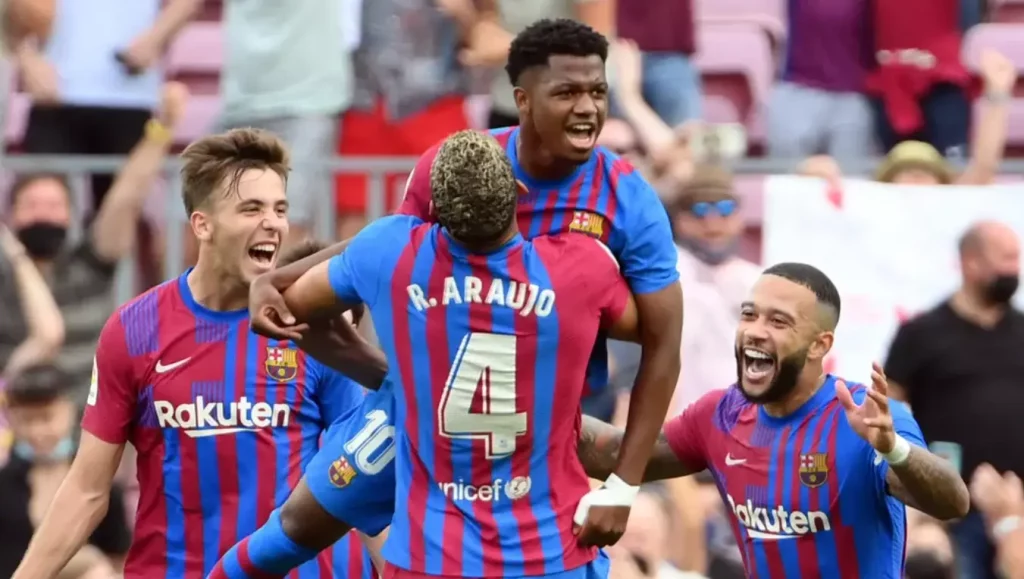
Section 4: Mental Toughness and Psychological Training
- Focus on Mental Resilience: Barcelona’s training program has expanded to include psychological training, helping players develop mental toughness and resilience, especially in high-pressure situations. In a world where football matches can be decided by a single moment of brilliance or a lapse in concentration, Xavi has recognized the importance of building a team that is mentally strong and capable of staying focused under pressure.
- Psychological Support: The club has introduced more comprehensive mental health programs, which include sports psychologists and mental conditioning experts who work with players on techniques like mindfulness, visualization, and concentration exercises. This psychological support is aimed at improving players’ emotional regulation and ensuring they are prepared for the mental demands of playing in front of huge crowds, in high-stakes matches, and during the intense competition of La Liga and European tournaments.
- Building Confidence: Xavi’s emphasis on creating a positive and supportive atmosphere in the locker room has helped players develop confidence in their abilities. The team regularly participates in team-building activities and group discussions that help to strengthen their collective mindset and reinforce the idea of shared responsibility for success.
Section 5: Technological Innovations in Training
- Video Analysis and Tactical Feedback: Technology plays a key role in Barcelona’s training process. The club uses advanced video analysis tools to break down previous matches and training sessions, allowing both coaches and players to analyze their performance and identify areas for improvement. In tactical meetings, video sessions are often held to provide visual feedback, helping players understand their individual and collective roles in different match scenarios.
- Virtual Reality Training: One of the more innovative training techniques employed by Barcelona is the use of virtual reality (VR) technology to simulate game situations. Players can immerse themselves in VR simulations that mimic match conditions, helping them hone their decision-making, spatial awareness, and reaction times. This cutting-edge training method allows players to experience real-time pressure situations without the physical exertion, enabling them to improve their cognitive abilities and game intelligence.
Conclusion:
FC Barcelona’s current training regimen represents a blend of tradition, innovation, and strategic evolution. Under Xavi Hernández’s leadership, the club has made significant strides in adapting to the demands of modern football. By focusing on tactical flexibility, advanced fitness techniques, psychological resilience, and the integration of youth players, Barcelona is well-positioned to continue its pursuit of excellence both domestically and in Europe. The emphasis on cutting-edge technology and personalized recovery methods further enhances the club’s overall approach to performance optimization.
As Barcelona continues to refine its training methods, the balance between individual brilliance and team cohesion will be crucial in determining their success in future campaigns. By adapting to the ever-changing nature of the sport, Barcelona remains committed to maintaining its position among the elite clubs of world football.

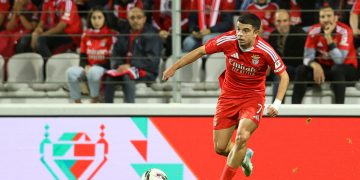
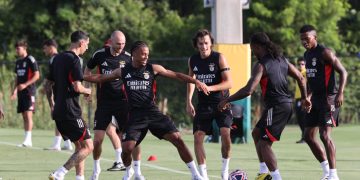
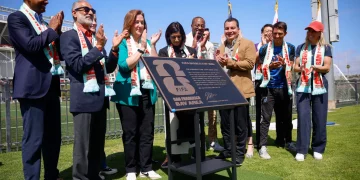


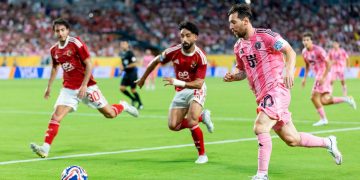







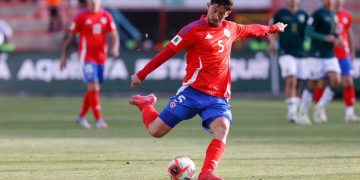

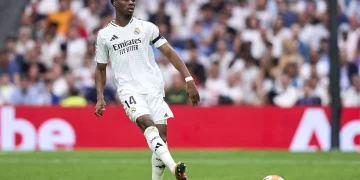




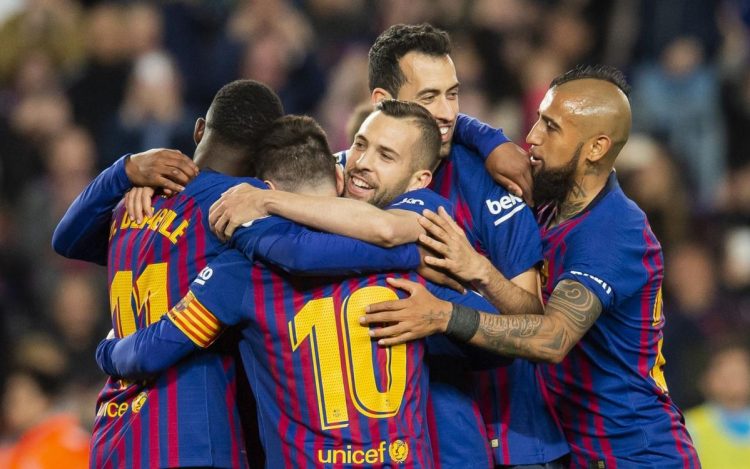












Discussion about this post